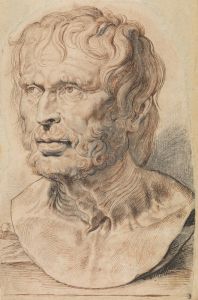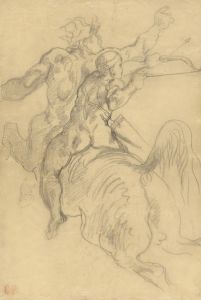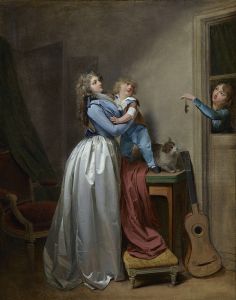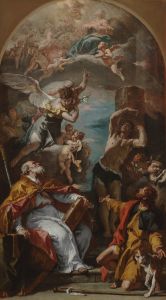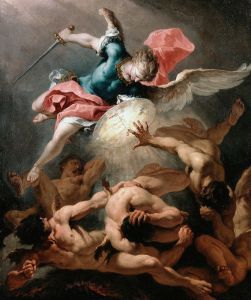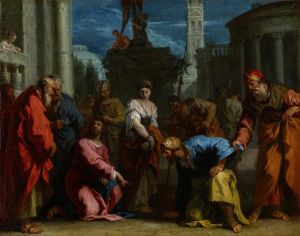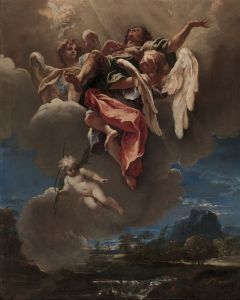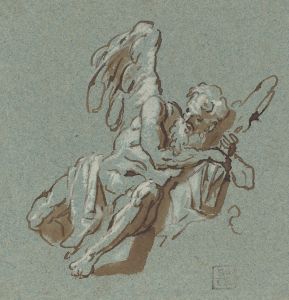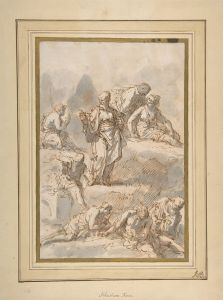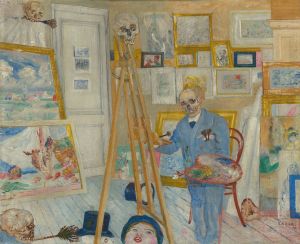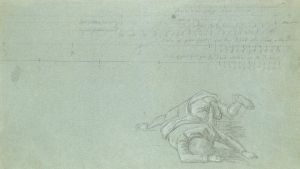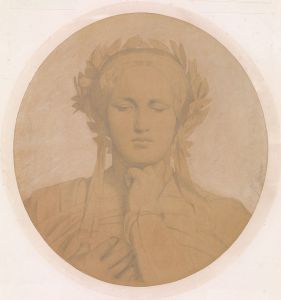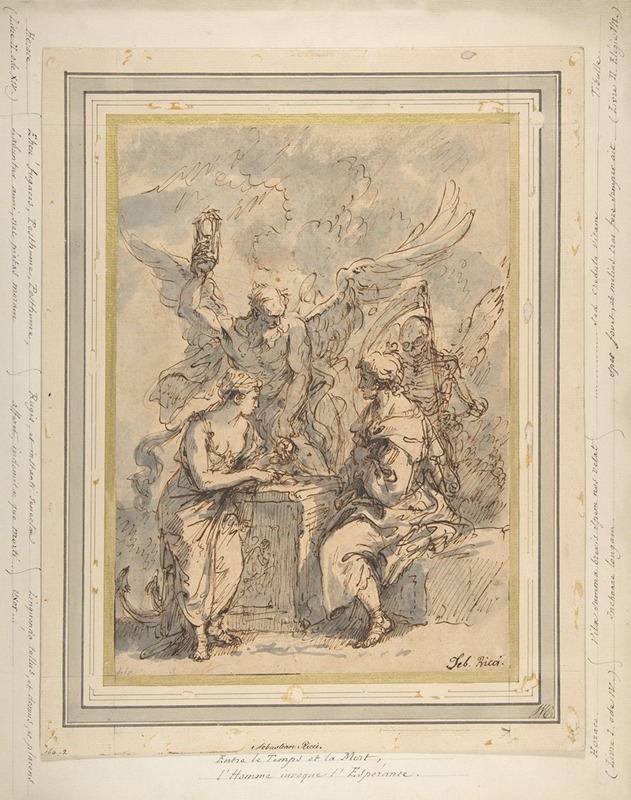
Allegory with Figures of Hope, Time, and Death
A hand-painted replica of Sebastiano Ricci’s masterpiece Allegory with Figures of Hope, Time, and Death, meticulously crafted by professional artists to capture the true essence of the original. Each piece is created with museum-quality canvas and rare mineral pigments, carefully painted by experienced artists with delicate brushstrokes and rich, layered colors to perfectly recreate the texture of the original artwork. Unlike machine-printed reproductions, this hand-painted version brings the painting to life, infused with the artist’s emotions and skill in every stroke. Whether for personal collection or home decoration, it instantly elevates the artistic atmosphere of any space.
Sebastiano Ricci's "Allegory with Figures of Hope, Time, and Death" is a notable example of Baroque painting, reflecting the rich allegorical tradition of the period. Ricci, an Italian painter born in 1659, was known for his vibrant compositions and dynamic use of color, which are evident in this particular work. The painting is an allegorical representation, a common theme in Baroque art, which often sought to convey complex ideas and moral lessons through symbolic figures and narratives.
In "Allegory with Figures of Hope, Time, and Death," Ricci employs personification to explore themes of human existence and the passage of time. The figure of Hope is typically depicted with attributes such as an anchor or a flower, symbolizing optimism and the aspiration for a better future. Time is often personified as an elderly man, sometimes with wings or an hourglass, representing the relentless and inevitable passage of time. Death, a frequent subject in allegorical works, is usually shown as a skeletal figure or with symbols like a scythe, underscoring the transient nature of life.
Ricci's composition likely integrates these figures in a manner that invites viewers to reflect on the interplay between hope, the inexorable march of time, and the certainty of death. This thematic exploration is characteristic of the Baroque period, which was marked by dramatic expression and a focus on the emotional and spiritual aspects of human experience.
The painting's style is indicative of Ricci's broader oeuvre, which often features fluid brushwork, a vibrant palette, and a keen attention to detail. His ability to convey movement and emotion through his figures is a testament to his skill and contributes to the painting's dynamic quality. Ricci's work was influential in the development of the Rococo style, and his paintings were highly regarded in his time, earning him commissions across Europe.
"Allegory with Figures of Hope, Time, and Death" reflects the cultural and philosophical currents of the early 18th century, a time when allegorical paintings served not only as decorative pieces but also as vehicles for conveying moral and philosophical ideas. Ricci's work would have resonated with contemporary audiences familiar with the symbolic language of allegory, inviting them to ponder the deeper meanings embedded within the artwork.
While specific details about the provenance and current location of "Allegory with Figures of Hope, Time, and Death" may not be extensively documented, Ricci's reputation as a master of allegorical painting ensures that his works continue to be studied and appreciated for their artistic and historical significance. His contributions to the Baroque and Rococo movements remain influential, and his paintings are celebrated for their ability to capture the complexity and beauty of human experience through allegory and symbolism.






